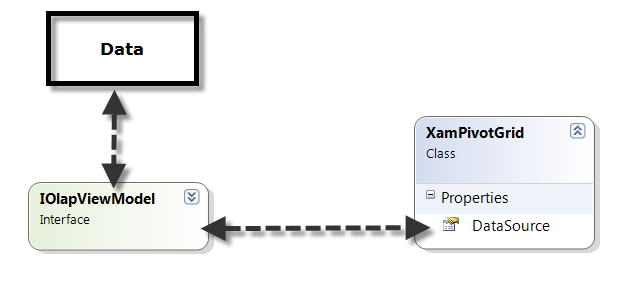
This topic serves as an overview of the data sources supported by the xamPivotGrid™ control.
This topic contains the following sections:
Data sources provide access to and manipulation of data and they instruct xamPivotGrid and xamPivotDataSelector™ controls how to use the data that you want to analyze.
The xamPivotGrid control supports the following data sources:
All data sources listed above inherit from the DataSourceBase class which implements the IOlapViewModel interface. These classes serve as a link between the actual data source (for example the server where the olap cube is stored) on one side and the xamPivotGrid on the other side. In order to use the xamPivotGrid control with your existing data you will need to use one of these ViewModels. However, if these data sources are insufficient, advanced users can create a custom view model with a data provider by implementing the IOlapViewModel interface or inheriting from the DataSourceBase class.
The following class diagram is a simplified model of how data binding works for the xamPivotGrid control.

There are several components that are most commonly used when binding data to the xamPivotGrid. For more details, refer to the table below.
The following topics provide additional information related to this topic.